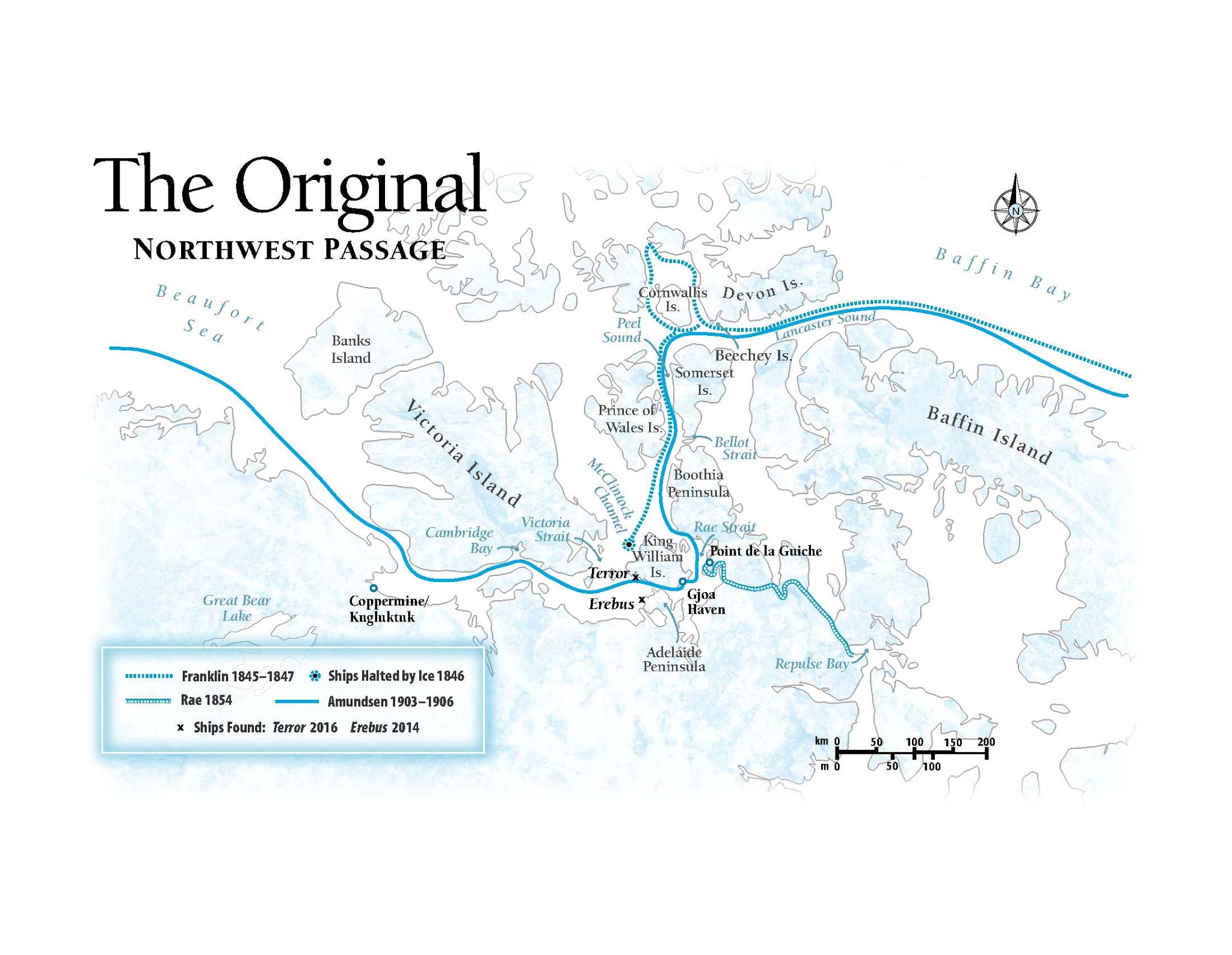Say goodbye to defenders of the Royal Navy narrative of the Northwest Passage
A few days ago, in the comments section below the Globe and Mail review of Dead Reckoning, I placed a link to my rejoinder. The review’s author, Janice Cavell, has responded in that same forum. She says nothing about my two main criticisms, and so apparently concedes — first, that her review short-shrifted the Inuit, failing to name even a single Inuk, and second, that it suggested white males are interchangeable. Instead, Cavell again takes up the cudgels in defence of the Royal Navy narrative of the Northwest Passage — a story that does change to suit new information, but that ALWAYS manages to keep those old familiar naval officers front and centre.
Ever since Lady Franklin in the 1850s, the defenders of Official History have relied on geographical confusion and misunderstanding to make their case. But check the map attached, taken from the endpapers of Dead Reckoning. As you can see, despite Cavell’s contention, Bellot Strait is more than 100 km northeast of King William Island. It played no role whatsoever in the first navigable Northwest Passage, as established by Roald Amundsen in 1903-06. Click on the map and check out the route he took.
Far from denying that John Franklin “discovered” Franklin Strait — which is simply the southern extension of Peel Sound, south of Bellot Strait — I argue and show clearly that Franklin sailed directly through that waterway. By so doing, he established a navigable passage through those waters, all the way south to near the top of King William Island (KWI). Whether the coastline was charted is irrelevant. In January 1830, travelling with several Inuit, James Clark Ross had crossed the ice from Boothia to the northern tip of KWI — but surmised, in snowy conditions, that the waters to the east of that island ended in a bay. The map Franklin carried showed precisely that, which is why he turned west and got trapped in the ice.
In 1854, after travelling overland across Boothia with an Inuk, William Ouligbuck, and an Ojibway, Thomas Mistegan, John Rae determined that what James Clark Ross, and so Franklin, had believed to be a bay was in fact a strait: Rae Strait. Aware of Rae’s discovery, which had been verified by Leopold McClintock, Amundsen followed in the wake of Franklin to KWI, then veered east through Rae Strait to Gjoa Haven, before proceeding onward. So, once more with feeling: Dr. John Rae — that Orcadian Scot, that Hudson’s Bay Company fur trader, that first great champion of Inuit oral history — John Rae discovered the final link in the first navigable Northwest Passage.
